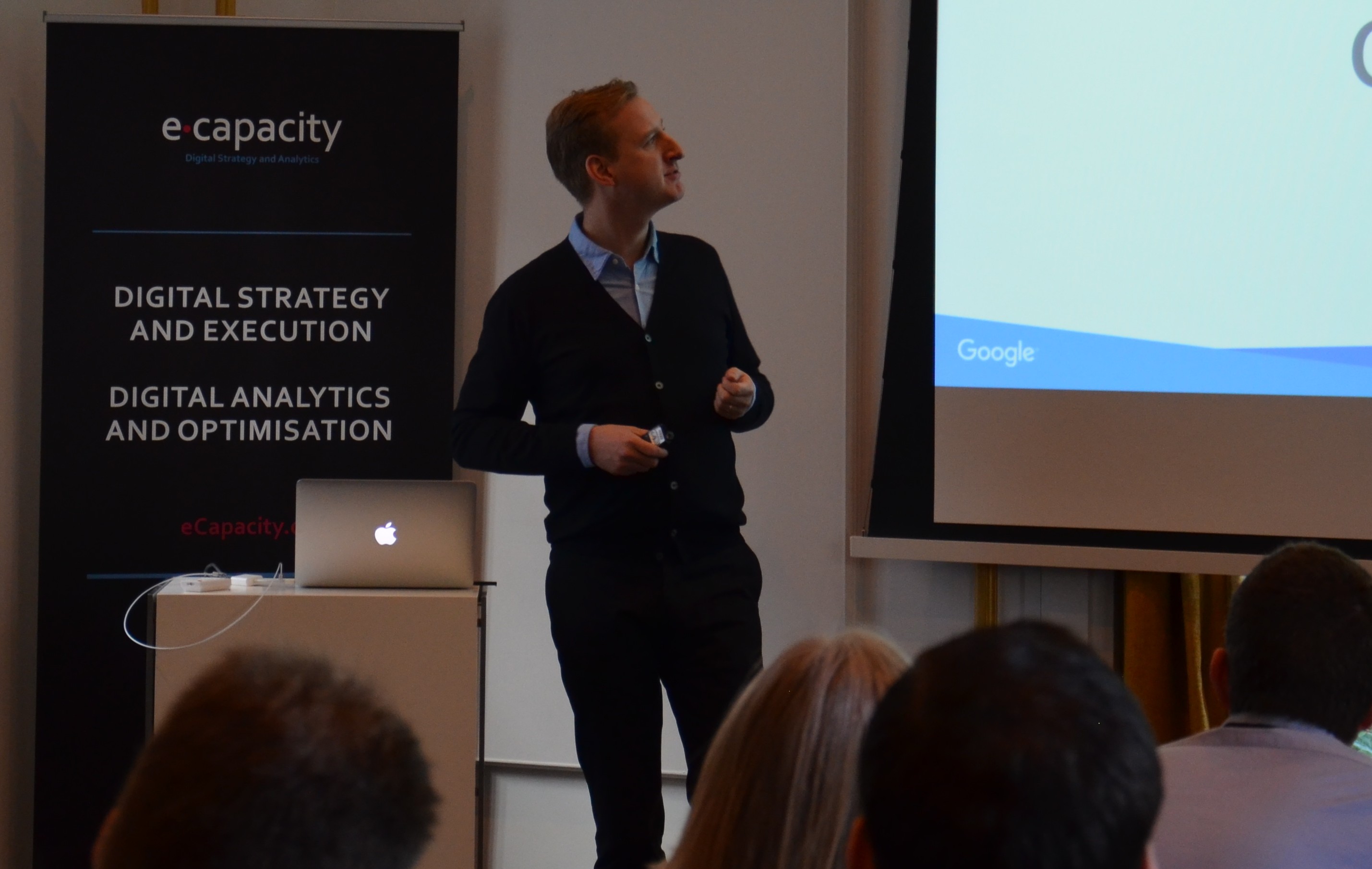in Danish
Google Analytics is an important data-source for many corporations.
This is why eCapacity invited Oliver Borm, Advanced Performance Lead for EMEA, from Google to present the latest trends in Enterprise Analytics at the eCapacity Digital Executive Event in Copenhagen in January 2016. Click to read Danish version of this article

- Building the single source of the truth
To get the most out of your data it is crucial to know how much you can trust the data. The key to this is to integrate data from different sources, to achieve a single overlook. In this way you be able to take advantage of the data to make better decisions and improve your results.
- Tag Managers are now mainstream – letting you try and learn much faster
It’s important to stay on top of your site tagging. Using Tag Management tools enables quick and agile implementation of tags providing valuable data. But you need to be sure how site development and changes affect the tagging. To ensure a robust tag implementation it needs to be anchored on the site elements that are not subject to change, to avoid the risk of your valuable data disappearing – a key to this is working with data layers. High quality tagging, high quality data.
- Slowly catching up with reality i.e. tracking across devices
It’s a challenge to track traffic across devices; mobile, desktop and tablet. It makes it difficult to trust your data, because you don’t have an exact representation of your user behaviour. Google is working on stitching data together across devices based on login data. Since many user log in to Google services on several devices, it enables Google to give a representation of the flow of traffic across devices, and thus a more complete picture of the user behaviour.
- Learning to love BIG samples
Google is constantly working on optimizing data-quality by taking advantage of the huge amounts of data generated across Google-services. This adds value when working with data samples, which is a reality becoming more and more urgent with the rise of privacy initiatives and legislation. Working with sampled data is a thing web-analysts will increasingly have to get used to.
- Web analysts will need to study more science
Data is not enough on it’s own. You need critical insight in to data quality to evaluate continuously. Statistical knowledge and understanding of scientific methods will be needed for web-analysts, to be able to develop the data as a solid foundation to base decisions on.
- Beyond ”web” analytics
Google Analytics now has the opportunity of integrating data from all connected devices, such as cash registers or kiosks located in retail-outlets, or digital billboards. This opens up many opportunities for omni-channel insights, such as the effect of online advertising on offline sales.
eCapacity has assisted leading Scandinavian digital businesses (including Boozt and Momondo) in the implementation and use of Googles Enterprise Analytics platform ”Google Analytics Premium”. eCapacity is a certified Google Premium partner, and can help establish and take full advantage of the increased functions available in Google Analytics Premium.
Read more about eCapacity and Google Analytics Premium
in Danish
